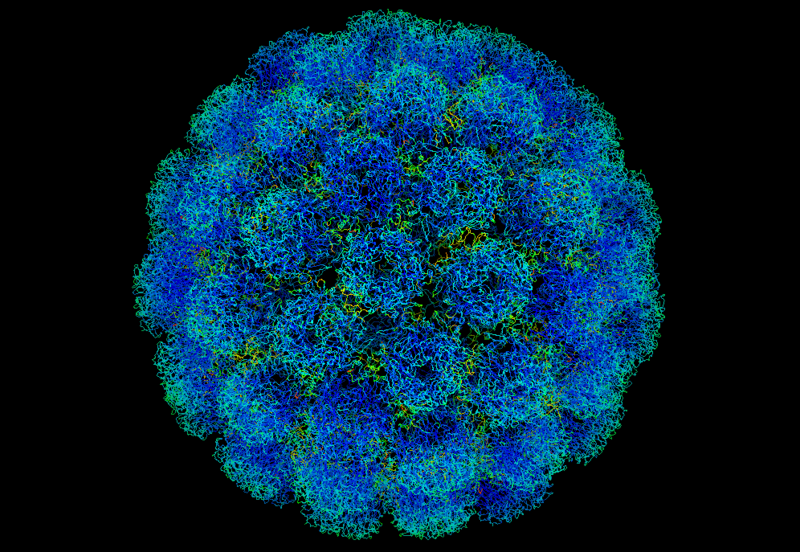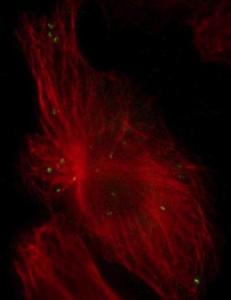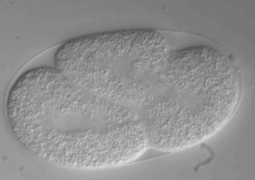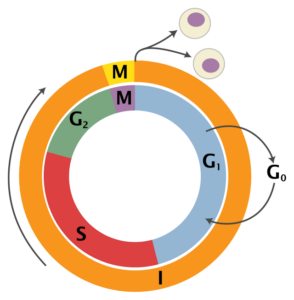Simian Virus 40 and SV40 large T antigen protein
Simian Virus 40 belongs to thePolyomaviridaevirus family. It is a DNA virus which can infect different vertebrate species, with the capability of causing solid tumors. During SV40 viral infection, its replication is maintained by viral proteins together with the host replication machinery.
The SV40 large T antigen is a major regulator of SV40 replication. SV40 large T antigen is an hexameric DNA helicase early transcribed during viral infection. In addition to its function in viral replication, it has a role in inactivation of tumor suppressor proteins like p53 and Rb proteins, inducing entry in S phase and thus promoting viral replication (Saenz Robles and Pipas, 2009)
The SV40 T antigen has been widely used in biological research as an inducerof cell line immortalization and as well for the generation of transgenic mouse models of human cancers (Colvin 2014). Both methods have contributedto our current understanding of cancer biology.

Ultra fast temperature shift device for in vitro experiments under microscopy
Temperature sensitive mutants of SV40 large T antigen
A temperature sensitive version of the SV40 large T antigen, the tsA58, has been used as a powerful tool for conditional cell line transformation. Transformed cell lines proliferate at the permissive temperature (33°C) but show proliferation arrest when shifted to restrictive temperature (39°C), upon T antigen inactivation (Jat and Sharp 1989).The use of ts mutants allowed for the initial understanding of the function ofthe T antigen protein in cell transformation (Brugge andButel 1975). Additional temperature-sensitive (t.s) mutations of SV40 large T antigen have been described (Ray 1992).
Conditional inactivation of SV40 large T antigen has been used, for instance, to induce senescencein fibroblasts in a temperature regulated manner (Brookes 2015), to generate conditionally immortalized epithelial cell lines from transgenic mice (Whitehead and Robinson 2009), or to generate conditionally immortalized cell lines for blood-brain barrier models (Terasaki 2003).
The use of temperature sensitive mutant proteins remains a widespread method for conditional inactivation of proteins in multiple model organisms and cell lines. Temperature shifts are efficient, easy to perform, and with minoroff-target effects as opposed to protein inactivation with chemicals.
References
Brookes et al. Cell Cycle. 2015;14(8):1164-73.
Colvin et al. Semin Cell Dev Biol. 2014 Mar;27:61-73.
Saenz Robles and Pipas, Semin Cancer Biol. 2009 Aug;19(4):229-35.
Whitehead and Robinson Am J PhysiolGastrointest Liver Physiol. 2009 Mar; 296(3): G455–G460.
Terasaki 2003, Drug Discov Today. 2003 Oct 15;8(20):944-54.
Ray et al. J Virol. 1992 Nov; 66(11): 6509–6516.
Jat and Sharp. Mol. Cell. Biol. April 1989 vol. 9no. 4 1672-1681
Bruggeand Butel. J Virol. 1975 Mar;15(3):619-35



